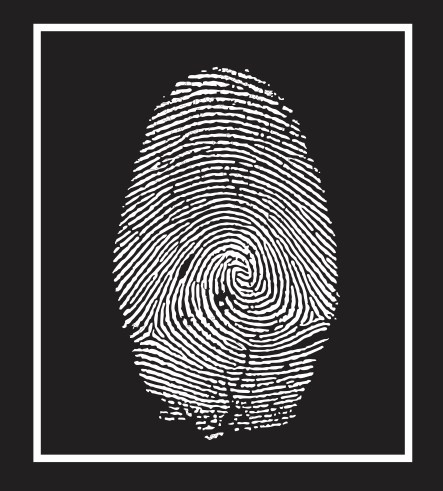 |
| illustration art logo design pinger prit black |
illustration art logo design pinger prit black
It's a Fingerprint Function for Human Life
It's a Fingerprint Function for Human Life
Hand illustrations and fingerprints.
In 1910, Thomas Jennings managed to escape from the murder scene, but left little advice too important. The clue that chooses his fate before the law as a murderer is a fingerprint.
In addition to the problems handled by Inspector Eduardo Alvarez in Argentina, Jennings' problem was the first, in a criminal investigation, to make fingerprints evidence of a crime.
After Jennings' troubles, the role of fingerprints became too vital in forensic investigations. This unique identity marker is too ideal to lead justice officers to find a criminal figure.
Of course, fingerprints are not only useful for identifying each human being. Apart from the need for forensic investigation, fingerprints also have other functions.
"People have two inspirations about fingerprints, which is to support strengthening the grip, and that supports improving the perception of touch," said Professor Roland Ennos, a biomechanics and biology researcher at the University of Hull, in the UK as quoted from Live Science.
It's a Fingerprint Function for Human Life
Fingerprint scanner technology on Qualcomm screens.
The strokes on the fingerprints create friction on the human hand and the surface of the object it touches. Thanks to this situation, humans are able to grip the wet surface, causing the hands not to slip.
Fingerprints are also useful to avoid blisters. According to Ennos, fingerprint strokes also cause skin not to lightly blister. While at exactly the same, the fingerprint also releases the skin to stretch at the right angle.
Meanwhile, Georges Debregeas, a biologist at Sorbonne University in Paris, France, demonstrated the fingerprint function in more detail. According to him, on our fingers there are four types of mechanical receptors, or cells that respond to mechanical stimulation (such as touch).
One of its receptors is pacinian blood cells, which are approximately 2 millimeters below the surface of the skin at the fingertips. These receptors mediate perception of texture.
When a human touches an object's surface, its fingerprints can transmit vibration frequencies to oversensitive pacinian blood cells. Thanks to this subject, mechanical receptors are able to hold sensory info.
It's a Fingerprint Function for Human Life
The hand of a baby gorilla at the Zoological Park of Saint-Martin-la-Plaine, France.
However, what does this sensory info do for human life? For thousands of years, human hands have been a necessary tool to obtain and process food. Finger sensitivity to texture is too useful the function of detecting the type of food that is worth consuming.
"The reason why we need to detect and sort by texture is because we want to overcome good food coming from bad food," debregeas said. Touch sensitivity sustains humans to keep away rotten or infected food.
In addition to humans, pacinian fingerprints and blood cells are also owned by other animals, such as chimpanzees and koalas, who rely on touch sensitivity to get the right food.
Debregeas's theory was also discussed along with Ennos's confession, regarding fingerprints that were able to strengthen the grip. "Fingerprints are too likely for us to correct the force directly precisely we can grip the object," Ennos added.
For example, just as the human hand slips onto something, fingerprints support surface change detection so that the hand is able to adjust the grip. This suggests that the senses of human touch and grip develop together together simultaneously.
